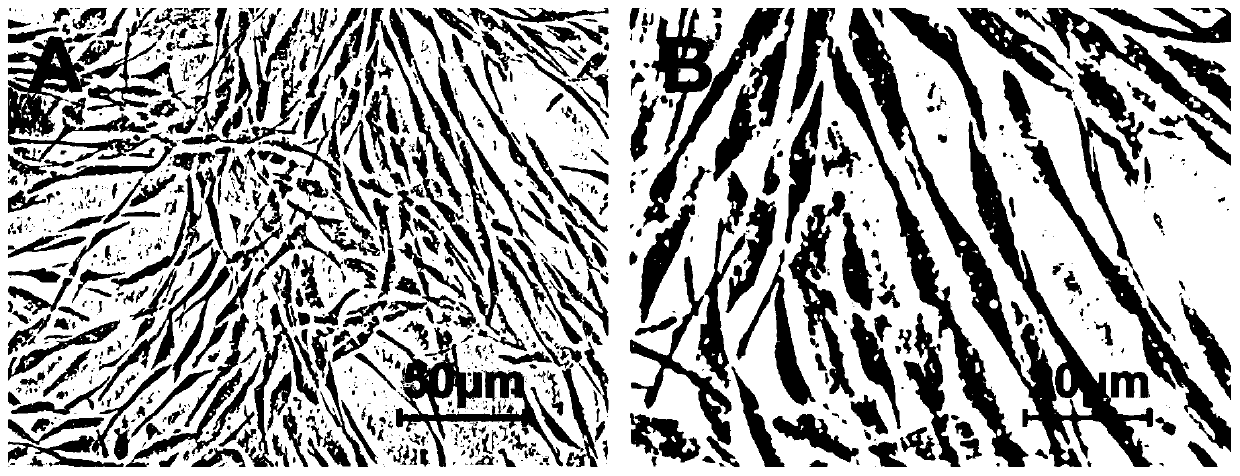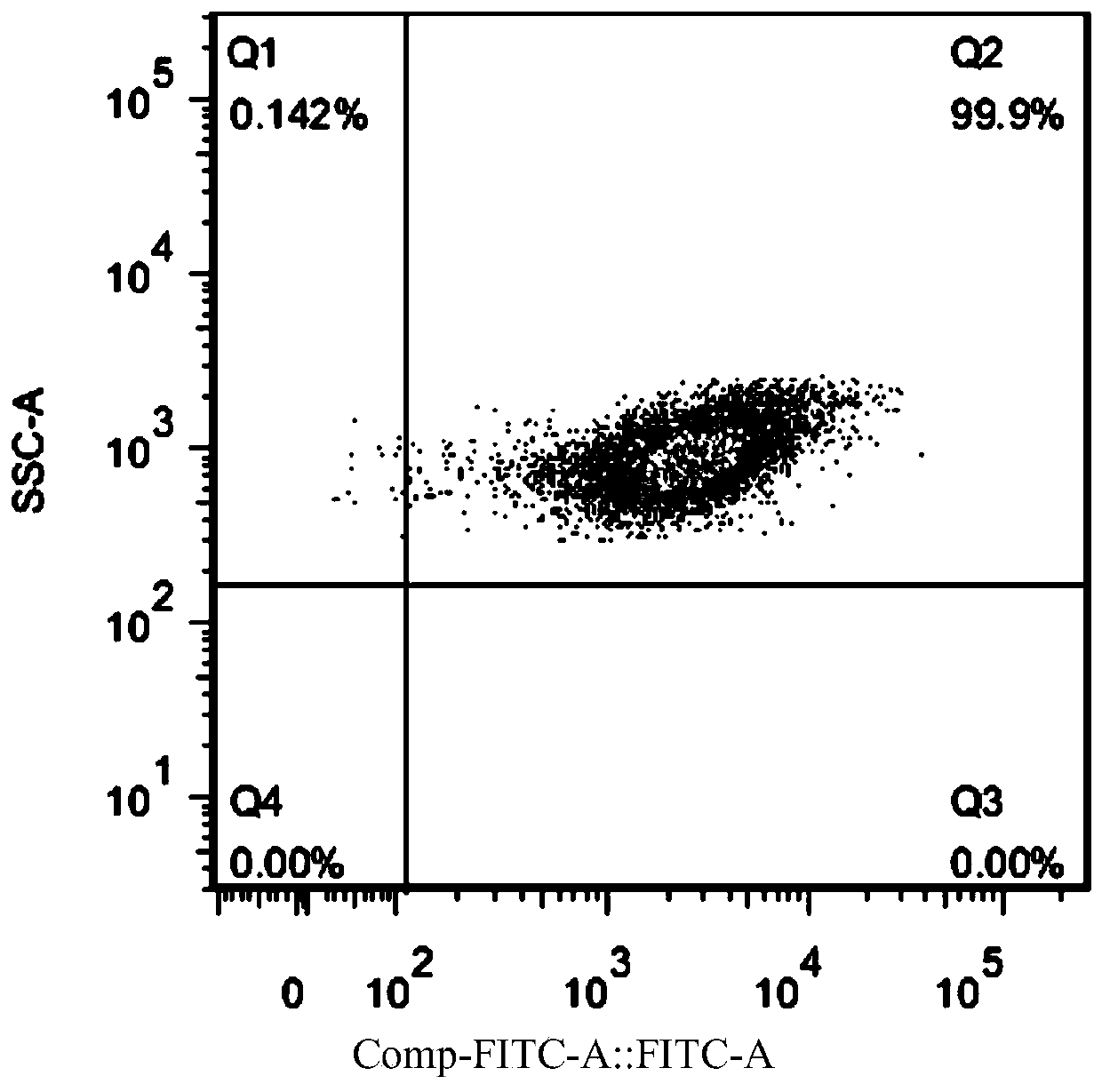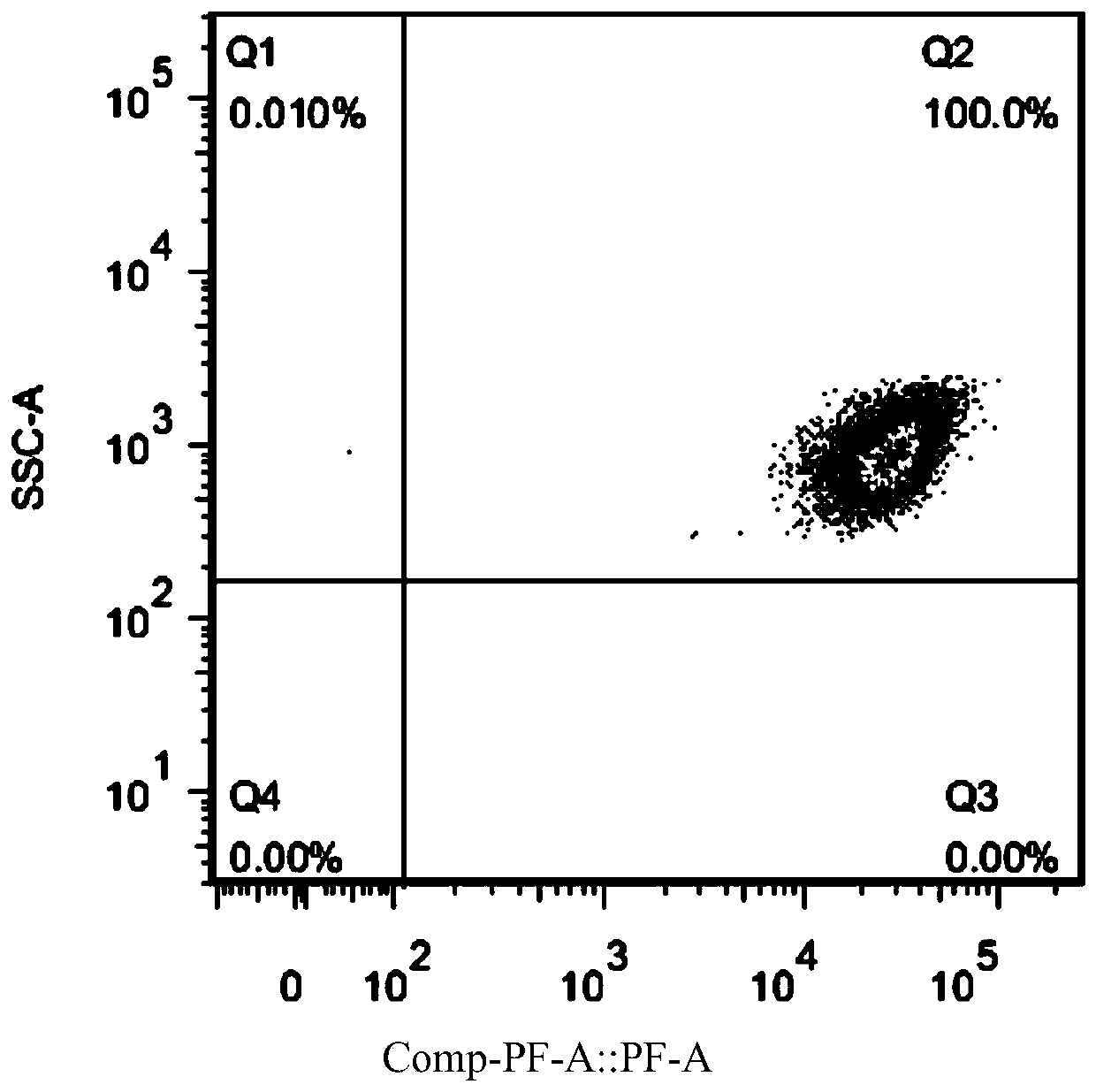Isolation method of stem cell exosomes
A separation method and stem cell technology, applied in the field of separation of stem cell exosomes, can solve the problems of high exosome concentration and expensive equipment, and achieve the effect of retaining activity, short centrifugation time and simple separation method
- Summary
- Abstract
- Description
- Claims
- Application Information
AI Technical Summary
Problems solved by technology
Method used
Image
Examples
Embodiment 1
[0028] Example 1: Isolation and culture of hASCs stem cells
[0029] Experimental method: Take adipose tissue after liposuction from a young healthy human body, rinse it with PBS solution 3 times and cut it into about 1mm 3 Add 0.1% collagenase I to digest the small pieces for 30 minutes. Prepare complete medium: 500ml medium, 10% serum, 10ng / ml bFGF, add an equal volume of complete medium to stop the digestion, centrifuge at 1000rpm for 10min. Resuspend cells, filter with 100μm filter and press 1×10 6 / ml inoculated in T25 cell culture flask, set 37℃, 5% CO 2 Incubate in a saturated humidity incubator and change the medium after 48 hours. Observe that the cells are 90% confluent, digested with 0.25% trypsin, and subcultured at 1:3.
[0030] Flow cytometry detects the surface molecular markers of hASCs: CD44, CD73, CD90, CD105.
[0031] Experimental results: After the P2 generation, the isolated hASCs maintained a fibroblast-like morphology, uniform in size and densely arranged, gr...
Embodiment 2
[0035] This embodiment provides a method for isolating stem cell exosomes, which includes the following steps:
[0036] S1: Use serum-containing medium to cultivate stem cells to a cell density of 80%, and collect stem cells; use washing solution to wash stem cells 3 times, then use serum-free medium to continue culturing stem cells for 24 hours; among them, serum-containing medium has a mass fraction of 10 % FBS in DMEM medium; Serum-free medium is DMEM medium; washing solution includes: 0.01M PBS buffer, the pH of PBS buffer is 7.2;
[0037] S2: Remove the stem cells in the culture system obtained by S1, then filter the remaining components with a 0.22μm filter membrane, and collect the filtrate;
[0038] S3: Add the filtrate to a 15mL 10KD concentration tube (the first concentration tube), and centrifuge at 4000g for 40 minutes at 4°C to obtain a concentrated solution;
[0039] S4: Dispense the concentrated solution into a 0.5mL 10KD concentration tube (second concentration tube), ...
Embodiment 3
[0042] This embodiment provides a method for isolating stem cell exosomes, which includes the following steps:
[0043] S1: Use serum-containing medium to cultivate stem cells to a cell density of 70%, and collect stem cells; wash stem cells twice with washing solution, and then use serum-free medium to continue culturing stem cells for 23 hours; among them, serum-containing medium contains a mass fraction of 10% FBS in DMEM medium; serum-free medium is DMEM medium; washing solution includes: 0.01M PBS buffer, the pH of PBS buffer is 7.2;
[0044] S2: Remove the stem cells in the culture system obtained by S1, then filter the remaining components with a 0.22μm filter membrane, and collect the filtrate;
[0045] S3: Add the filtrate to a 15mL 10KD concentration tube (the first concentration tube), and centrifuge at 3500g for 35 minutes at 4°C to obtain a concentrated solution;
[0046] S4: Dispense the concentrated solution into 0.5mL 10KD concentration tube (second concentration tube)...
PUM
| Property | Measurement | Unit |
|---|---|---|
| diameter | aaaaa | aaaaa |
Abstract
Description
Claims
Application Information
 Login to View More
Login to View More - R&D
- Intellectual Property
- Life Sciences
- Materials
- Tech Scout
- Unparalleled Data Quality
- Higher Quality Content
- 60% Fewer Hallucinations
Browse by: Latest US Patents, China's latest patents, Technical Efficacy Thesaurus, Application Domain, Technology Topic, Popular Technical Reports.
© 2025 PatSnap. All rights reserved.Legal|Privacy policy|Modern Slavery Act Transparency Statement|Sitemap|About US| Contact US: help@patsnap.com



